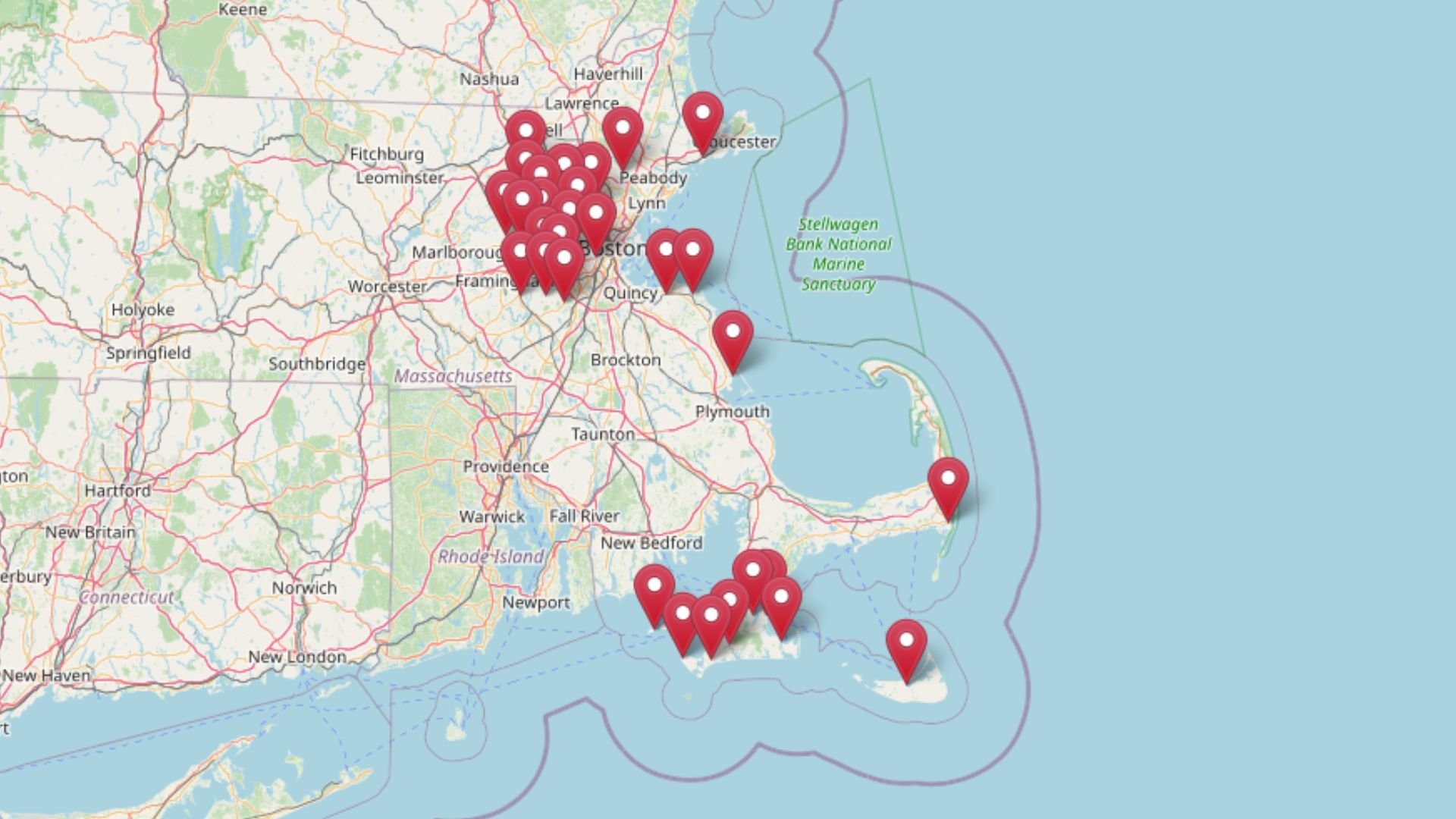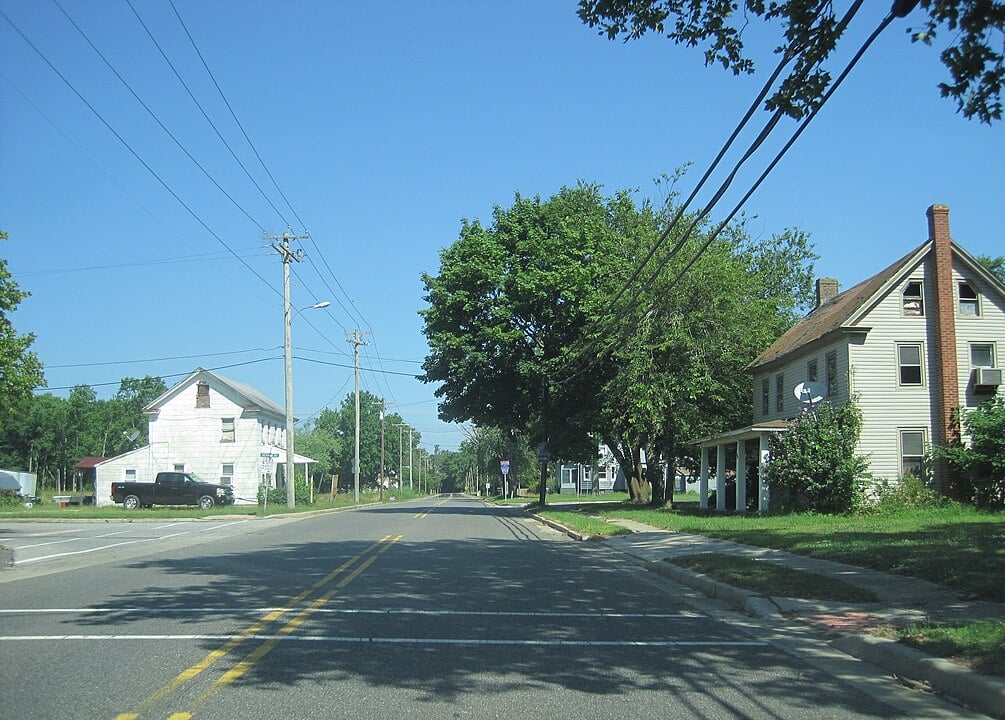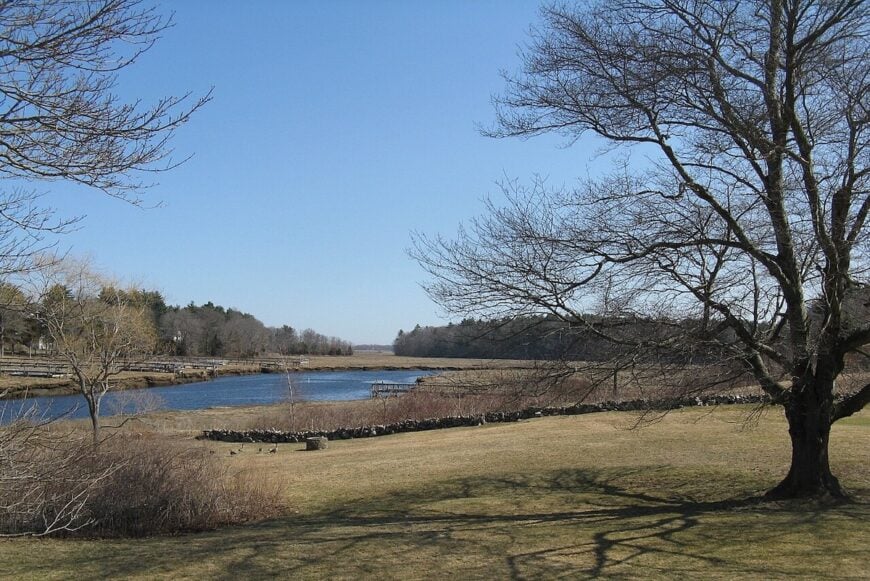
Southeast Massachusetts doesn’t announce itself with neon or skyline—its power lies in the quiet fold of marshland against tidal rivers, the curve of bogs blushing red in autumn, and villages where the streets still bend with the land instead of around it. These towns exist slightly off the map’s glare, shaped by water, woods, and history that never hurried to leave.
Step off the main roads and you find places where white clapboard houses lean into the wind, town greens anchor local gossip, and harbors carry the scent of both salt air and old work. The pace isn’t nostalgic—it’s simply steady, a rhythm held in stone walls, weathered barns, and trails that wind until you forget you were ever measuring time.
From cranberry country near Carver to the tidal edges of Buzzards Bay, each of these communities holds its own brand of seclusion. Some are tucked into pine thickets, others rest along rivers that once carried mill wheels or fishing fleets. Their privacy isn’t manufactured—it’s earned through geography, tradition, and a refusal to expand beyond what feels natural.
The result is a scatter of towns that feel both deeply local and quietly apart, where the landscape insists on being part of daily life. To spend time here is to understand how seclusion works in layers—water against land, tradition against change, and community against the larger noise beyond.
25. Raynham Center
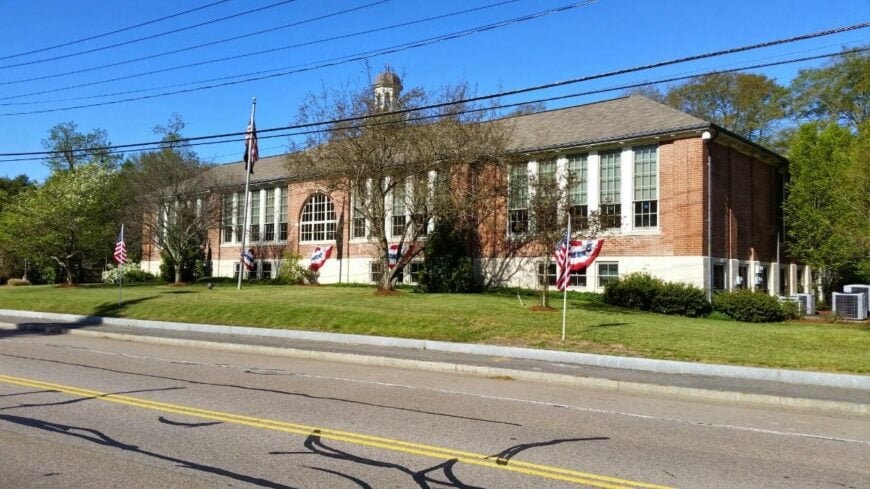
Tucked between quiet stretches of forest and winding backroads, Raynham Center feels surprisingly secluded despite its placement in southeastern Massachusetts. Its sense of hiddenness comes from shaded streets, historic homes, and a calm that lingers just beyond the reach of busier nearby towns.
The village hums with old New England charm—white-steepled churches, mossy stone walls, and maple trees that blaze with color in autumn. Locals stroll through Johnson Pond trails, explore antique shops, fish the Taunton River, and gather for seasonal fairs on the green.
While many residents commute into nearby cities, the heart of life here beats slowly with a mix of small-town services and deep historic roots. It’s the kind of place where time feels layered and the modern world fades gently into the background.
Where is Raynham Center?
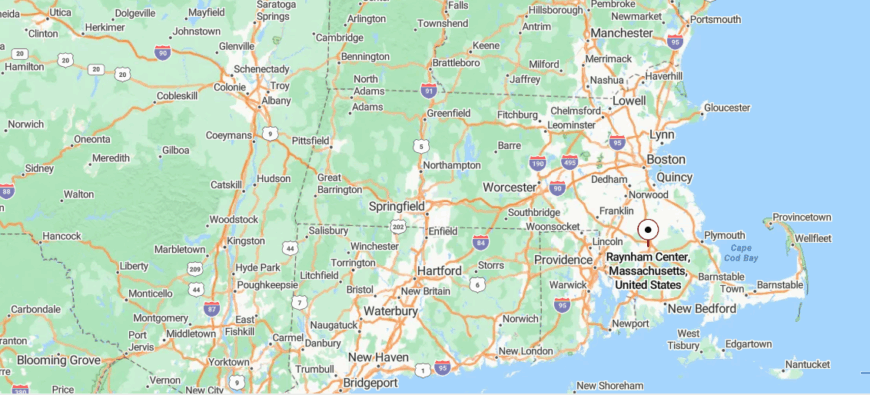
Raynham Center is located in Bristol County, Massachusetts, nestled within the town of Raynham about 32 miles south of Boston. It sits just off Route 24 and US-44, surrounded by rolling neighborhoods, old pastureland, and quiet town roads.
Driving in, local streets ease past tidy homes and small businesses until you reach the heart of the village. Even once you arrive, the calm, suburban pace makes it feel like a place gently set apart from city rush.
24. Berkley
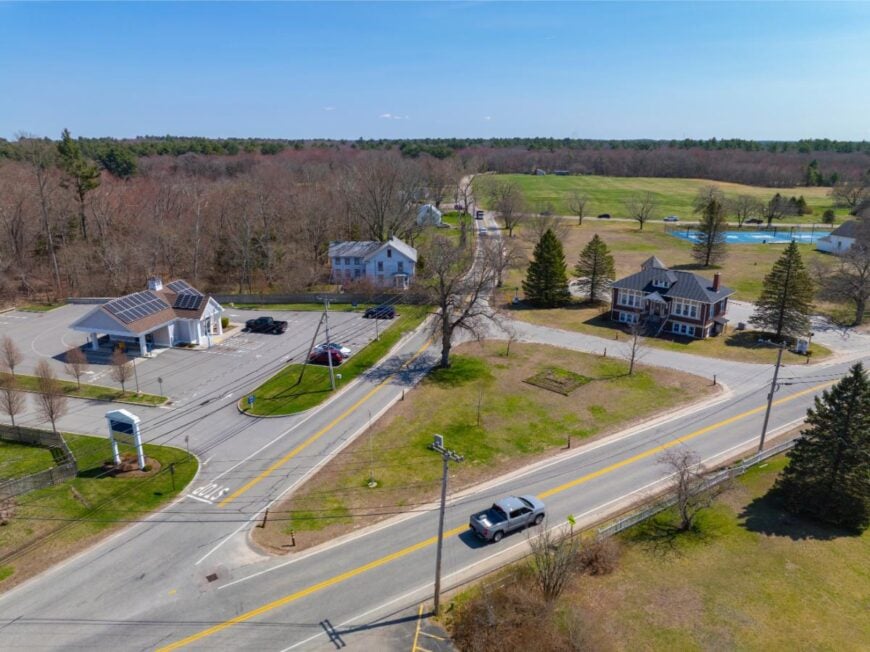
Cradled between winding country roads and stretches of conservation land, Berkley feels tucked away from the fast pulse of southeastern Massachusetts. Its sense of seclusion comes from quiet ponds, wooded trails, and a landscape that seems to muffle the outside world.
Life here carries a rustic New England rhythm—farmstands overflow in summer, old barns lean with dignity, and town gatherings feel like family reunions. Residents spend free time paddling on the Taunton River, hiking Dighton Rock State Park, and browsing seasonal roadside markets.
Many commute elsewhere for work, yet return each evening to a community grounded in tradition and simplicity. It’s the kind of place where the world slows down long enough for you to notice the sound of frogs singing at dusk.
Where is Berkley?
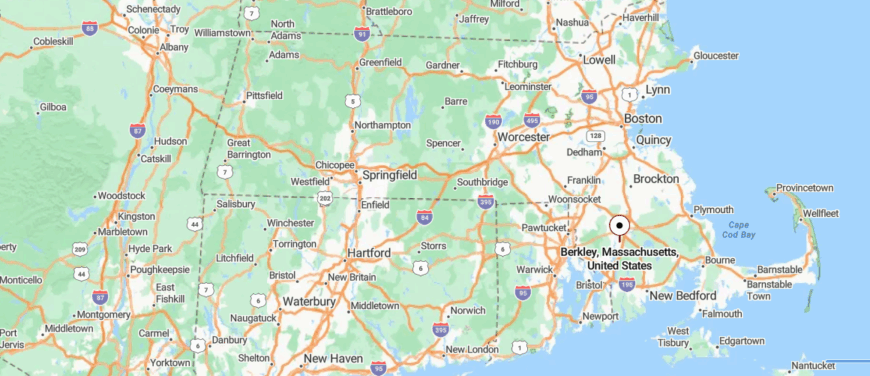
Berkley is a small town in Bristol County, Massachusetts, set about 40 miles south of Boston and surrounded by Taunton, Lakeville, Dighton, and Freetown. It sits just off Route 24, reached by turning onto quieter town roads that wind through woods and old farmland.
As you approach, the historic town common and handful of civic buildings signal you’ve arrived. The pace is gentle here, with tree-lined streets that feel quietly grounded and apart from the rush beyond.
23. Marion
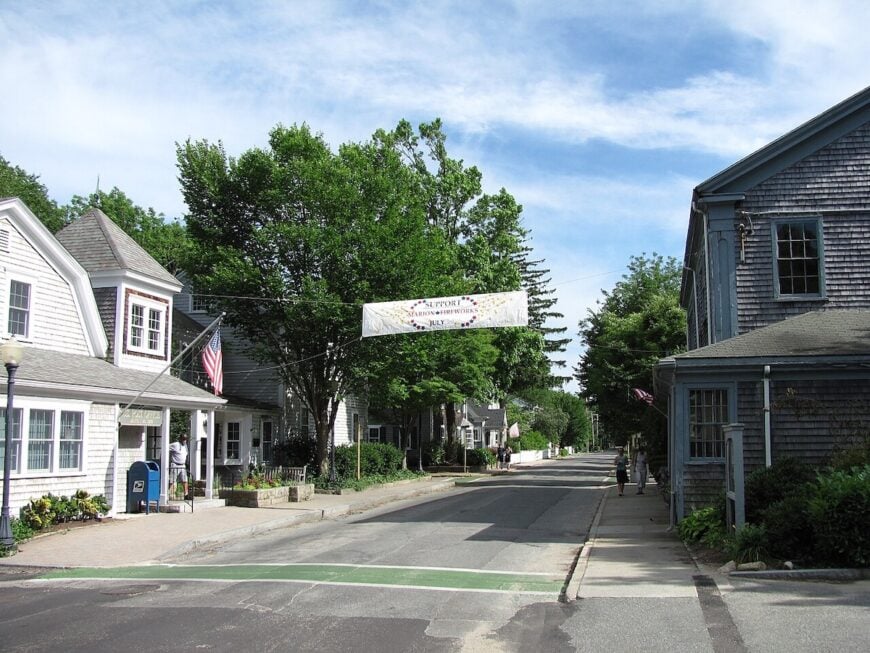
Tucked along Buzzards Bay with its sheltered harbor and quiet village streets, Marion feels like a New England postcard kept slightly out of the tourist spotlight. Its sense of seclusion comes from clapboard houses wrapped in salt air, shaded lanes under ancient elms, and a harbor filled with sailboats rather than crowds.
Life here drifts to a maritime tempo—oystermen hauling gear at dawn, children riding bikes past the whitewashed church, and neighbors lingering outside the town library. Days are spent kayaking through coves, wandering along Sippican Harbor, or strolling past shops and galleries that still feel rooted in small-town rhythm.
Though close to Cape Cod, Marion remains quietly apart, bound more to sea and village green than highway traffic. It’s the kind of place where time folds in on itself, carrying traces of whaling history alongside a steady coastal calm.
Where is Marion?
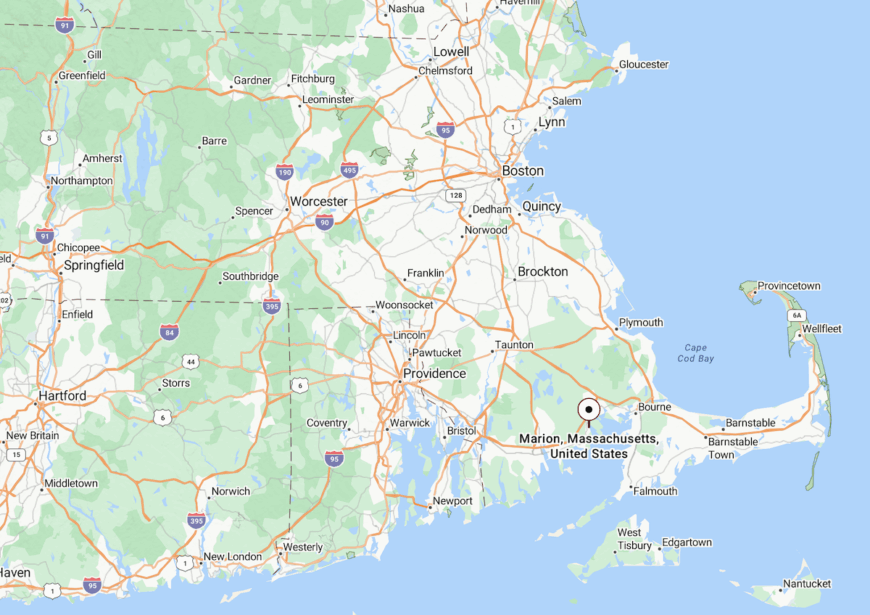
Marion lies in Plymouth County on the northern edge of Buzzards Bay, about 55 miles south of Boston and just west of Wareham. It’s reached by turning off I-195 and following local roads that lead past harbors and salt marshes until the town center appears.
Arriving here, the pace slows with the curve of the shoreline. Even close to Cape traffic, Marion feels buffered—its quiet streets and harbor air shaping a rhythm more coastal village than commuter town.
22. Halifax
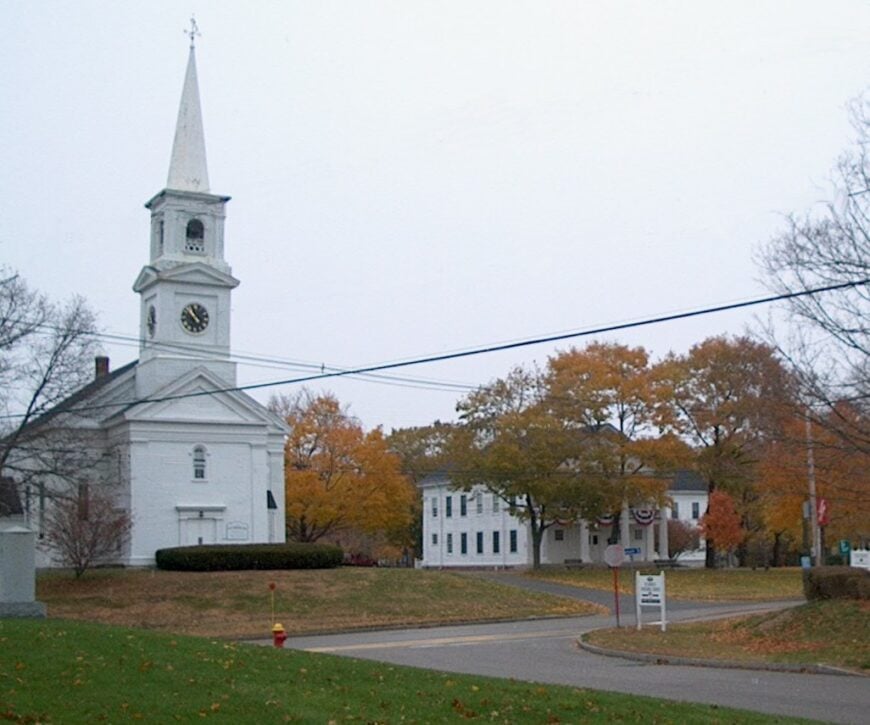
Folded between whispering pines and cranberry bogs that glow ruby in autumn, Halifax keeps itself quietly apart from the rush beyond its borders. Its seclusion is rooted in still ponds, sandy roads, and a landscape that seems to absorb sound and hurry alike.
Days drift by with unspoken ritual—boats slide out at dawn onto Monponsett, children ride bikes down narrow lanes, and smoke from backyard woodstoves curls into the sky. Locals spend weekends walking Burrage trails, swapping vegetables at roadside stands, and gathering for town suppers that feel like family.
Though work may take many beyond its tree-lined edges, home is defined by calm water, cultivated soil, and the kind of community that remembers birthdays without needing Facebook reminders. It’s the kind of place where peace feels practiced—and leaving always requires one last slow glance behind.
Where is Halifax?
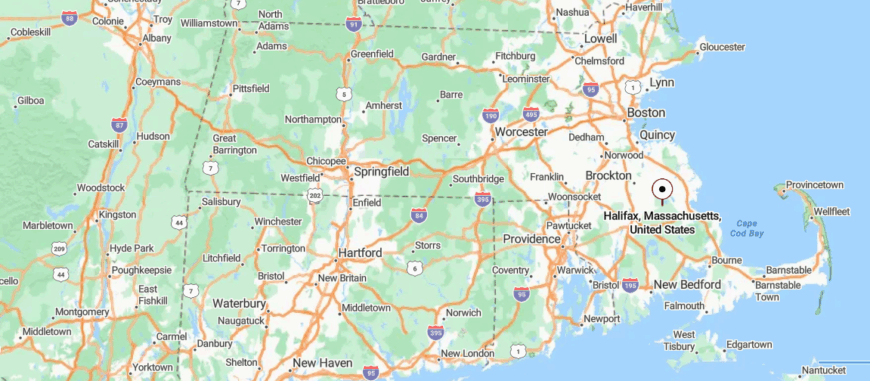
Halifax lies in Plymouth County, Massachusetts, bordered by Hanson, Pembroke, Plympton, Middleborough, and Bridgewater. It’s nestled among a cluster of ponds—especially the twin Monponsett Ponds—and lies roughly 12 miles west of Plymouth and about 33 miles south-southeast of Boston.
Reaching it means following local roads off the main highways and gradually descending into a landscape where cranberry bogs, wooded ponds, and hidden wetlands fold quietly into view. Arriving, you feel a hush shaped by water, woods, and small-town rhythms—like the pond-laced earth has been waiting to greet you all along.
21. Acushnet

Tucked between orchards, cranberry bogs, and winding country lanes, Acushnet feels like the kind of rural New England town that keeps itself just out of sight. Its sense of seclusion comes from quiet farmland, white-steepled churches, and stretches of conservation land that soften the edges of everyday life.
Life here is steady and seasonal—apple orchards draw families in autumn, sugar shacks steam in late winter, and farmers’ markets fill the common in summer. Locals spend time walking trails at the Acushnet Cedar Swamp, fishing along the Acushnet River, or gathering for community events that echo a simpler rhythm.
Though only a short drive from busier New Bedford, Acushnet feels worlds apart, rooted in small-town tradition and landscapes that have changed little over generations. It’s the kind of place where evenings end with crickets and porch lights rather than traffic.
Where is Acushnet?

Acushnet sits in Bristol County, Massachusetts, just north of New Bedford and about 55 miles south of Boston. It’s reached by turning off Route 140 or Route 18, slipping quickly from suburban sprawl into quiet farmland.
Arriving means passing cranberry bogs, stone walls, and wooded stretches until the town green and historic library come into view. Even then, the calm feels anchored in orchards and river bends, giving Acushnet the air of a place gently set apart.
20. East Taunton

Hidden behind stretches of cranberry bogs and whispering pine woods, East Taunton gives off the feeling of a place quietly set apart. Its separation comes not from distance but from the way ponds, marshlands, and winding roads create a soft barrier around everyday life.
Mornings begin with mist rising off Lake Rico while neighbors greet each other at farm stands and trailheads. Afternoons might be spent casting lines at Massasoit State Park, paddling the Nemasket River, or watching children race bikes down shaded streets.
Though many work in nearby towns, home life stays rooted in gardens, bog harvests, and community ballfields. It’s the kind of place where nature feels like a companion, gently keeping time beside you.
Where is East Taunton?

East Taunton lies in the eastern part of Taunton, Massachusetts, where suburban streets blend into wooded patches and former mill ponds. It sits about 40 miles south of Boston, just off US-44 and Route 140.
Reaching it means passing quiet homes, pine groves, and stretches of farmland until a small village center comes into view. Even then, the pace stays gentle—rooted in everyday life and framed by its mix of history and natural edges.
19. North Carver
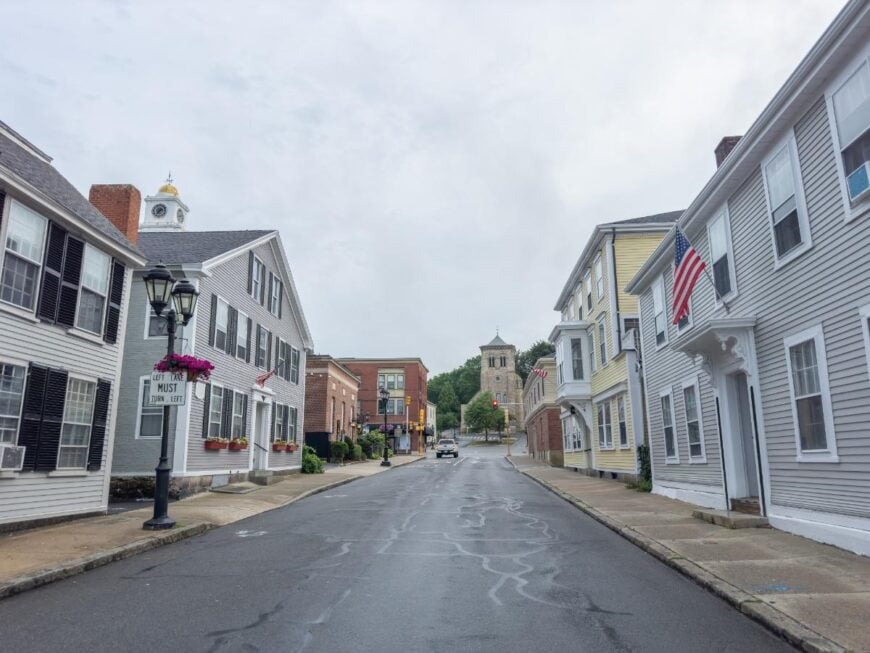
Tucked between sandy pine woods and checkerboard cranberry bogs, North Carver feels like a pocket of rural Massachusetts largely untouched by modern rush. Its quiet comes from long backroads, farm tracks, and a landscape that blurs softly between forest and field.
Life here leans into simplicity—rustic sheds line bog edges, church bells echo faintly at noon, and the hum of tractors replaces city sounds. Weekends are spent exploring Myles Standish State Forest, visiting Edaville’s vintage train rides, fishing shallow ponds, or picking up late-summer corn from roadside stands.
While commuters head toward busier towns each morning, evenings pull everyone back toward the same small-town rhythm shaped by seasons and soil. It’s the kind of place where dusk settles slowly—and peace feels planted deep in the earth.
Where is North Carver?
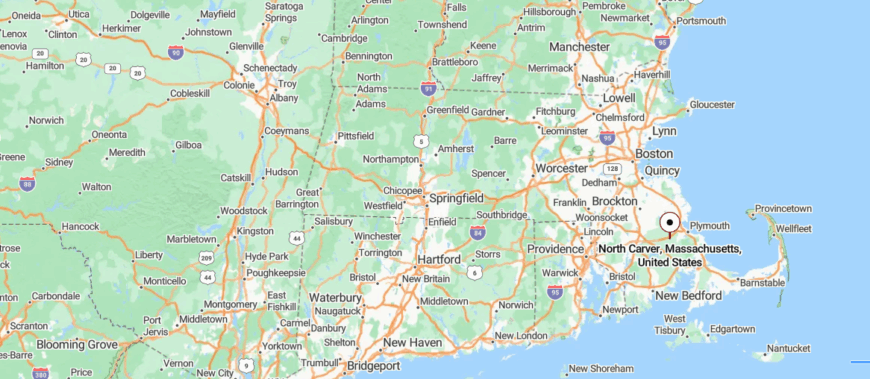
North Carver sits in Plymouth County, Massachusetts, just north of Carver’s main village and surrounded by pine forest and working cranberry bogs. It lies about 45 miles south of Boston, tucked away from major roads.
Travelers turn off US-44 onto small local lanes that wind past bogs, farm stands, and woodlots before arriving at a modest cluster of homes and shops. Even once there, it feels quietly set apart—more like a pause in the countryside than a destination announced.
18. Fairhaven

Resting along Buzzards Bay with its working harbor and sea-salted breeze, Fairhaven feels gently apart from fast-paced coastal life. Its sense of seclusion comes from historic streets lined with Victorian architecture and a waterfront where fishing boats outnumber tourists.
Life moves at a maritime tempo—bells ring from Fort Phoenix, gulls wheel overhead, and clapboard houses seem to watch the tides roll in and out. Locals spend their days walking the hurricane barrier, kayaking to little coves, browsing antique shops, and gathering for summer concerts on the lawn.
Some work in nearby New Bedford, while others remain tied to fishing, small businesses, and marine trades that span generations. It’s the kind of place where the ocean becomes daily company—and time feels measured in tides rather than clocks.
Where is Fairhaven?

Fairhaven lies on Massachusetts’ South Coast in Bristol County, where the Acushnet River meets Buzzards Bay. It sits about 50 miles south of Boston and 30 miles east of Providence, tucked across the river from New Bedford.
You reach it by following coastal roads that pass marshes, harbors, and old shipyards until the village center comes into view. Even once there, the salty air and quiet historic streets make it feel like a town gently shaped by tide and time.
17. Dighton
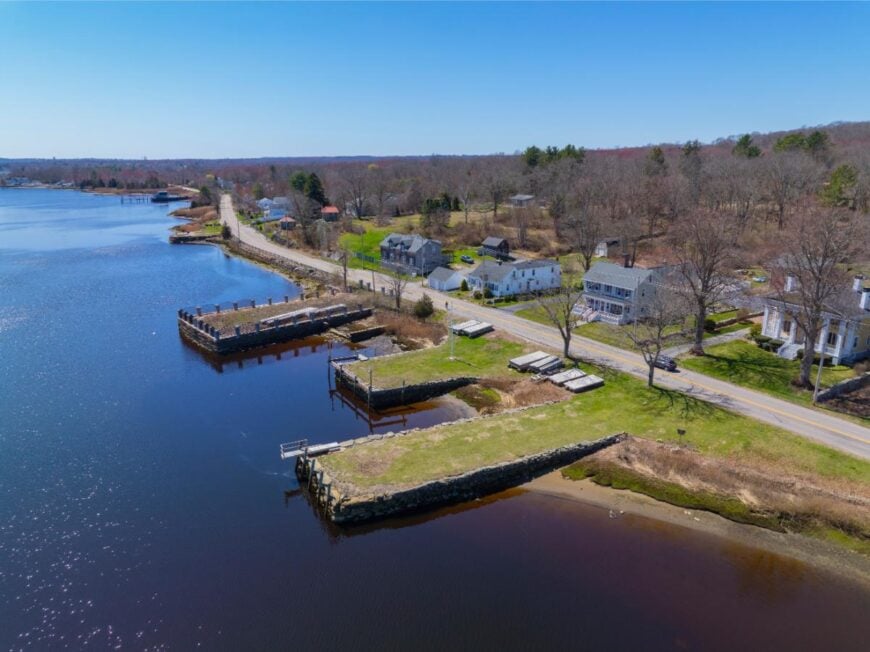
Along the riverbanks where Massachusetts begins to feel rural again, Dighton sits quietly with one foot in history and the other in farmland. Its tucked-away feeling comes from winding roads framed by old maples, salt marshes that muffle sound, and fields that stretch toward the Taunton River.
Life here keeps close to the land—farmstands brim with seasonal produce, school fairs draw the whole town, and evenings often end with porchlight conversations. Residents pass their time fishing tidal coves, following trails at Dighton Rock State Park, and meandering through orchards in every season.
Many work beyond its borders, yet return to routines rooted in soil, river, and tradition. It’s the kind of place where each day reminds you how sweet a slower life can be.
Where is Dighton?
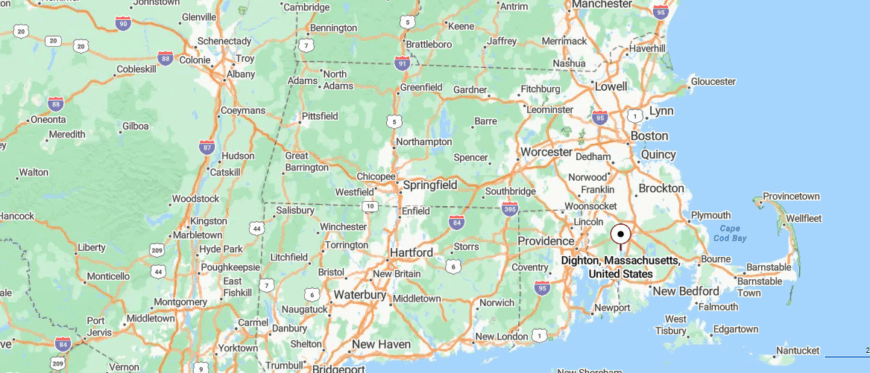
Dighton sits on the west bank of the Taunton River in southeastern Massachusetts, tucked between Taunton and Berkley about 40 miles south of Boston. It’s reached by winding back roads that pass farmland, marsh, and river bends far from busy highways.
As you near town, old wharf sites and shaded streets rise gently into view. Even when you arrive, the calm river air and sense of history make it feel like a place quietly rooted in its own rhythm.
16. Easton
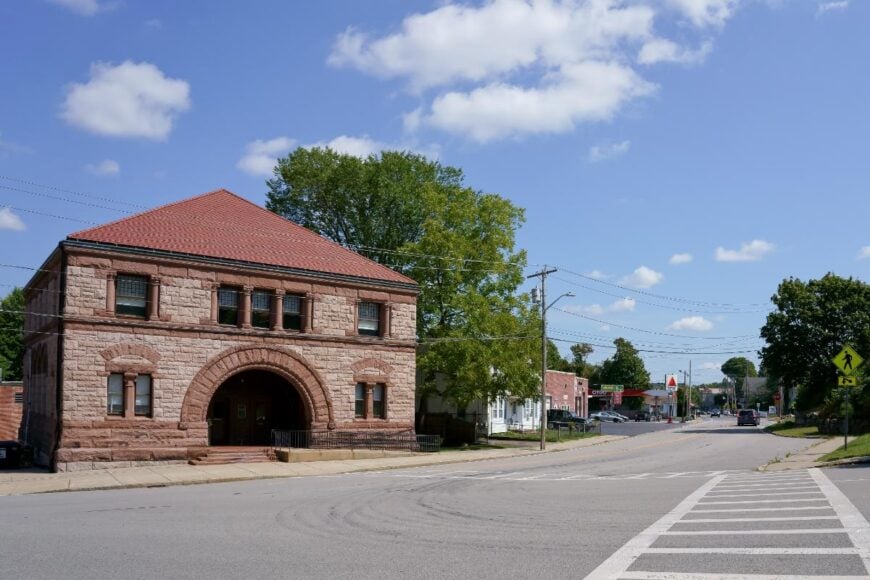
Hidden behind leafy roads and centuries-old stone walls, Easton Center gives the impression of a town gently tucked away in its own historic bubble. Its quiet separation comes from grand Richardsonian buildings, shaded commons, and a layout that seems designed for lingering, not rushing.
Daily life drifts by in soft rhythms—students walking past ivy-covered halls, neighbors chatting outside the old general store, and the distant toll of bells from the iconic church steeple. Time is often spent exploring Borderland State Park, attending events at the Ames Free Library, or wandering along Shovel Shop Pond with coffee in hand.
Many locals commute outward, but return each night to a village steeped in architectural beauty and proud tradition. It’s the kind of place where history feels like a gentle hush resting over everything.
Where is Easton?
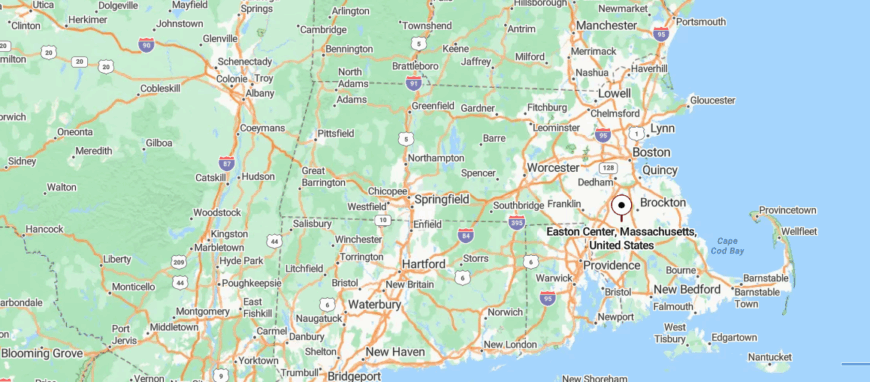
Easton Center lies in the northern part of Bristol County, Massachusetts, where suburban sprawl gives way to a more compact, centuries-old village heart. About 25 miles south of Boston, it forms the traditional downtown of Easton, surrounded by shaded neighborhoods and tucked just off Route 138.
Drivers slip into it almost without realizing, passing historic stone buildings and green commons rather than big signs and busy storefronts. It’s a place that feels discovered rather than arrived at — quietly grounded in a slower, older rhythm.
15. Marshfield Hills
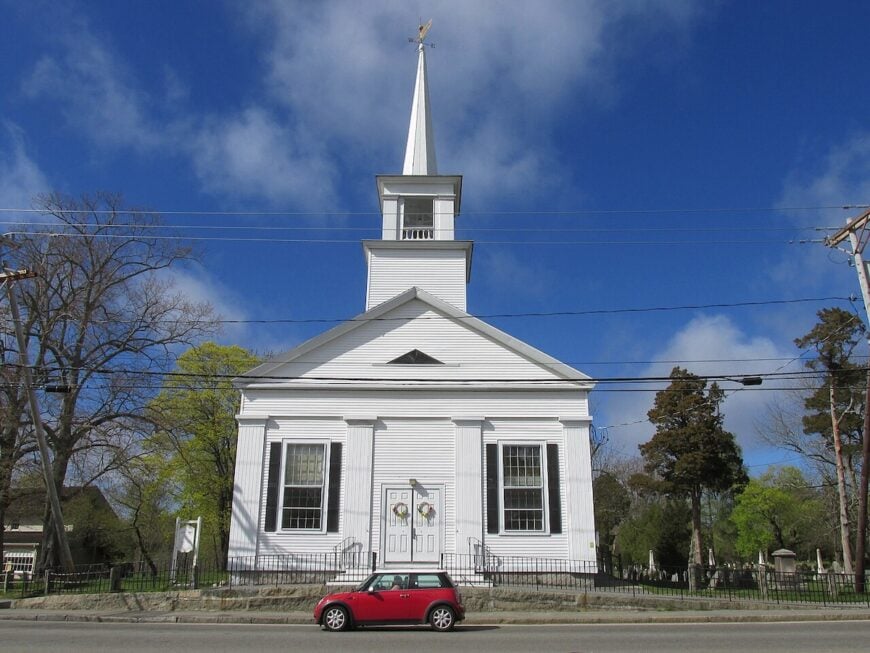
Set among winding backroads, cranberry bogs, and shaded ridges, Marshfield Hills feels like a quiet pocket of time preserved along the South Shore. Its seclusion comes from historic homes tucked beneath maples, the soft roll of farmland, and the kind of village center where neighbors linger on porches instead of rushing past.
Life here carries an old-fashioned rhythm—walks down Main Street past the general store, summer concerts on the green, and crisp autumn evenings marked by the smell of woodsmoke. Locals spend weekends hiking through Daniel Webster Wildlife Sanctuary, canoeing North River, or picking up fresh cider at family-run orchards.
Though part of Marshfield, the Hills keep their own identity, buffered from coastal bustle by woods, fields, and a scattering of colonial houses. It’s the kind of place where community feels woven into the landscape, stitched together by tradition and quiet charm.
Where is Marshfield Hills?

Marshfield Hills lies in Plymouth County, Massachusetts, about 30 miles southeast of Boston and just inland from the beaches of Marshfield. It sits north of the North River, reached by turning off Route 3A onto smaller country roads.
Arriving means curving past stone walls, cranberry bogs, and tree-shaded homes until the old village center comes into view. Even once you’re there, the sense of calm feels deliberate—like the town has chosen to keep its pace slower than the world around it.
14. Plympton
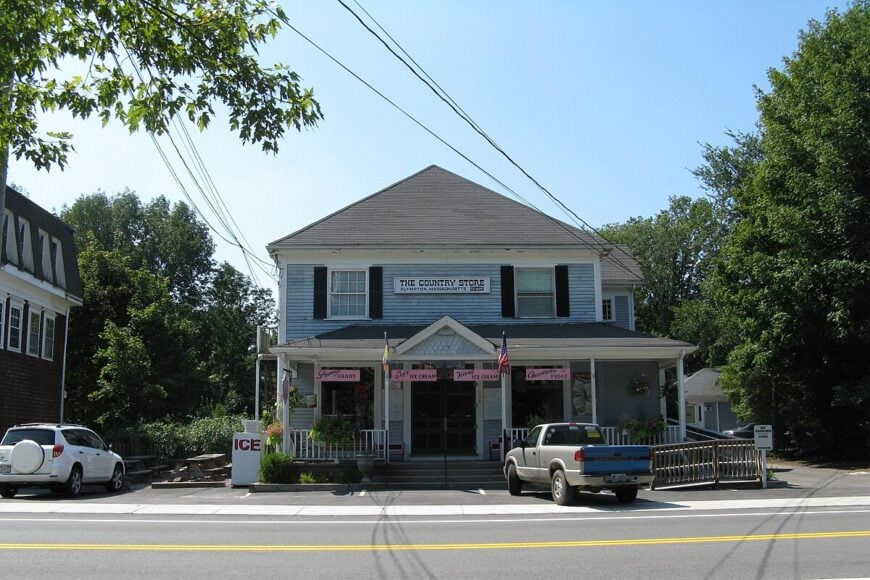
The quiet backroads where cranberry bogs blush red in autumn, Plympton sits like a rural secret between forest and field. Its seclusion comes from old farmsteads spread far apart, dirt lanes shaded by towering oaks, and a timeless hush that settles over everything.
The pace of life is unforced—chickens wander dusty yards, smoke curls from sugar shacks in winter, and the town green hosts events that feel lifted from another era. Locals spend their free moments exploring Cato’s Ridge, picking berries at roadside farms, canoeing slow-moving streams, and swapping stories outside the tiny general store.
Work often takes place far beyond town, yet home remains rooted in this landscape of bogs, barns, and remembered traditions. It’s the kind of place where every sunset looks like it has a story—and no one’s in a rush to tell it too fast.
Where is Plympton?
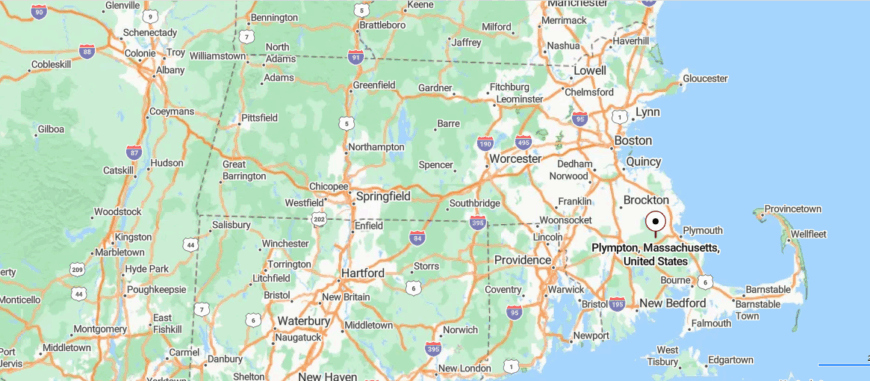
Plympton lies in a pocket of rural Plymouth County, Massachusetts, its fields and woodlots stretching softly between the bigger commuter towns around it. Set about 35 miles south of Boston, it feels tucked off the main routes—reached only after turning onto quieter, winding roads that slip past barns and stone walls.
The center of town appears almost suddenly: a green, a church steeple, and a scattering of colonial-era buildings sitting politely among old trees. Even at first glance, Plympton gives the sense of a place that has chosen to stay small, rooted, and quietly self-possessed.
13. Sandwich
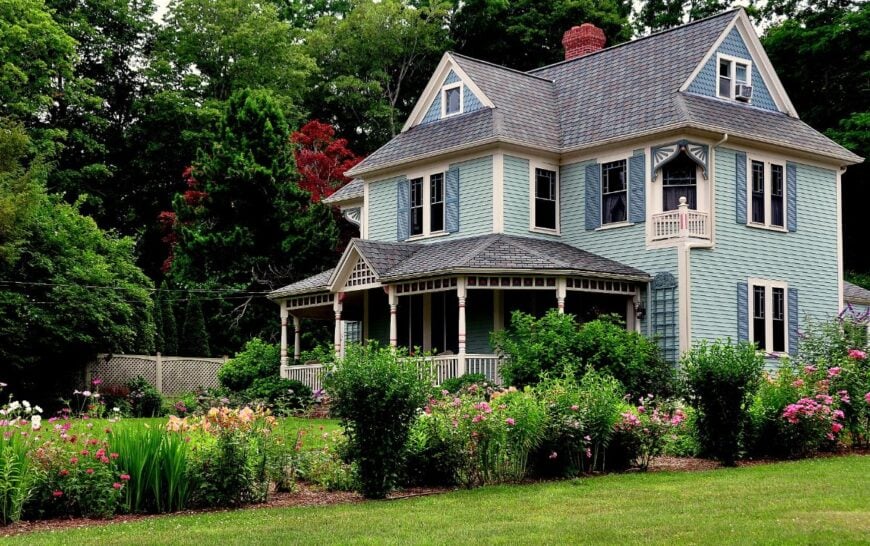
Cradled between salt marshes and Cape Cod Bay, Sandwich carries the gentle hush of America’s oldest seaside town. Its sense of seclusion comes from winding colonial streets, glassy mill ponds, and dunes that tuck the village away from coastal bustle.
Life here keeps to a timeless rhythm—cobblestones echo beneath footsteps, tidal creeks glint in the sun, and cedar-shingled homes lean proudly into sea breezes. Locals fill their days strolling the Sandwich Boardwalk, browsing glassblowing studios, fishing tidal flats, and picnicking by Shawme Pond.
Tourism mingles with a deep-rooted sense of community, supported by small shops, historic sites, and seasonal fishermen. It’s the kind of place where the past feels alive in each ocean breeze and peace drifts in with the tide.
Where is Sandwich?
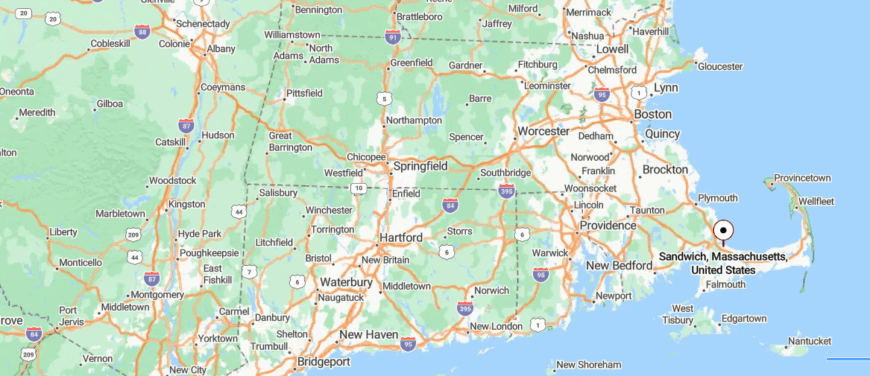
Sandwich anchors the northern gateway to Cape Cod, where the Cape Cod Canal meets Cape Cod Bay in Barnstable County. It lies about 57 miles south of Boston, reached by crossing the Sagamore Bridge and following Route 6A into town.
As you enter, colonial buildings, marsh views, and a village green rise gently into view. Even surrounded by summer travelers, Sandwich carries a quiet, timeless pull—like a coastal story still unfolding.
12. Barnstable

Spread across sandy inlets and pine-framed roads on Cape Cod’s northern curve, Barnstable feels quietly tucked into a world of its own. Its sense of seclusion comes from winding lanes, tidal marshes, and a coastline that buffers it from the mainland pace.
Life moves at a coastal rhythm—church bells echo over the village green, sea breezes mingle with salt hay, and fishing boats nudge gently in historic Barnstable Harbor. Locals spend their time walking Sandy Neck Beach’s dunes, browsing artist studios in the village, launching kayaks into protected coves, and gathering at farmers’ markets overflowing with local catch and produce.
While tourism keeps the summer lively, the heart of the town stays rooted in tradition, maritime trades, and generations-old homes. It’s the kind of place where time seems to ride in with each tide—and linger with purpose when it stays.
Where is Barnstable?
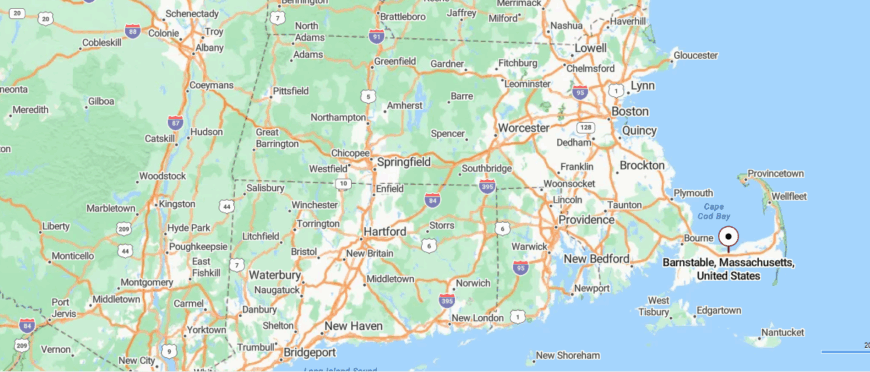
Barnstable spreads across Cape Cod’s midsection in Barnstable County, tracing the curve of harbor edges, cranberry bogs, and forested flats. It sits roughly 70 miles southeast of Boston, woven along the Cape’s main spine: Route 6 and the scenic 28.
Traveling in, you glide past salt marshes, boats bobbing in hyacinth-lined harbors, and elegant colonial homes until the flicker of village greens—Hyannis, Centerville, Osterville—signals you’re in its folds. Even among its bustle, Barnstable carries a quiet dignity, as though each hamlet is a well-worn page in a coastal tale that time still reads with reverence.
11. Mattapoisett
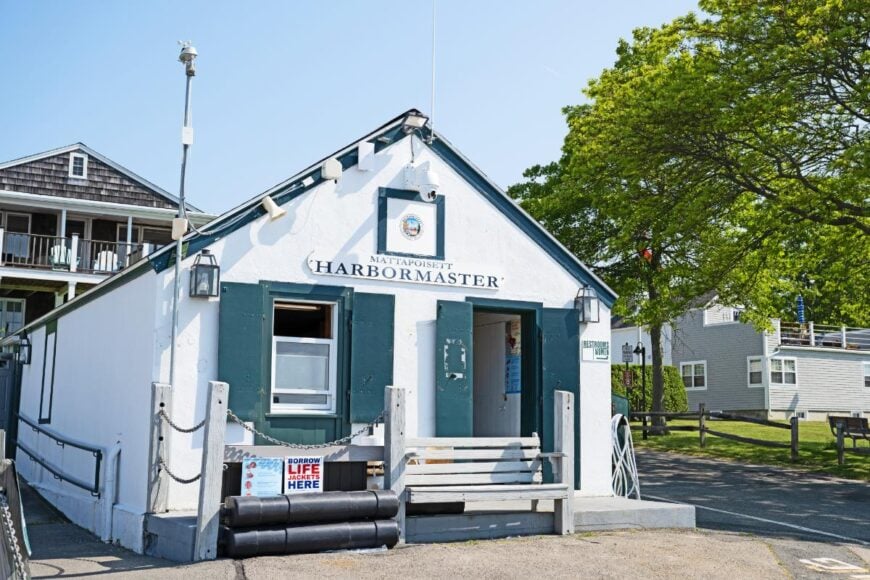
Hidden at the edge of Buzzards Bay where winding lanes meet tidal coves, Mattapoisett gives off the quiet feel of a coastal town content to stay a little under the radar. Its tucked-away charm comes from sea-worn docks, cedar-shingled cottages, and oak-lined streets that seem made for slow wandering.
The everyday soundtrack is gentle—rigging clinks against sailboats, gulls call overhead, and porch doors creak open to greet the breeze. Locals pass time walking to Ned’s Point Lighthouse, collecting shellfish at low tide, browsing village bookstores, or sipping coffee by the harbor wall.
Many residents head toward bigger cities for work, yet always return to this salt-crusted slice of Cape life by evening. It’s the kind of place where the ocean feels like a neighbor—and the world beyond the bay fades happily from view.
Where is Mattapoisett?
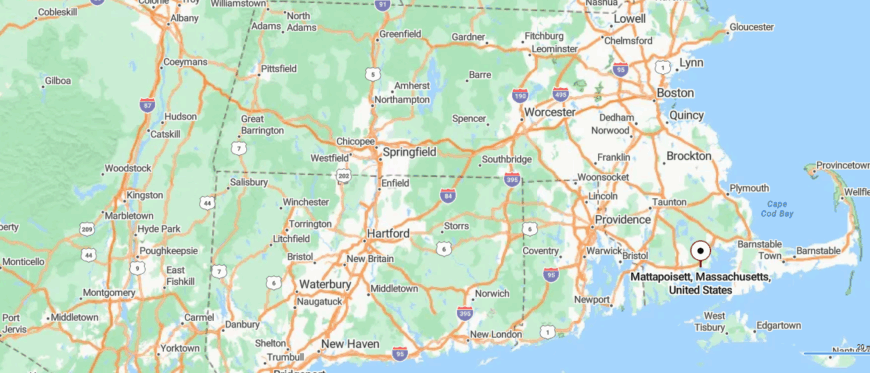
Mattapoisett rests along the edge of Buzzards Bay in southeastern Massachusetts, its shoreline curved gently around a sheltered harbor. It lies about 60 miles south of Boston and just east of New Bedford, tucked off Route 6 where woods give way to water.
Travelers arrive by winding past shingled cottages and marshy inlets until the lighthouse at Ned’s Point and a ring of docks come into view. Even with boats bobbing in the harbor, the village feels unhurried—held together by tide, history, and a soft seaside hush.
10. South Middleborough

South Middleborough is an area that offers extensive rural landscapes and a sense of isolation that I find incredibly peaceful. With a sparse population spread out over large properties, it’s the perfect place to escape the buzz of city life.
The community is surrounded by dense forests and serene wetlands, providing ample opportunities for hiking, bird watching, and enjoying nature. The main industries here are small-scale agriculture and local businesses that cater to the needs of residents.
What makes South Middleborough truly secluded is its vast open spaces and minimal commercial development, allowing for a quiet lifestyle close to nature. If you’re looking for a place where you can enjoy privacy and tranquility, this hidden gem might just be for you.
Where is South Middleborough?

Located in the southern part of Middleborough, Massachusetts, South Middleborough is tucked away in Southeast Massachusetts. Its seclusion comes from being off the beaten path, away from major highways and urban centers.
The area is surrounded by natural barriers like forests and wetlands, which add to its secluded feel. You can reach South Middleborough by taking local roads from Middleborough Center or via Route 28, but be prepared for a scenic drive through some of the region’s most beautiful rural landscapes.
9. Assonet

Assonet is a charming village in the town of Freetown with a population that hovers around 4,000 residents. I love its quaint, historic feel, with buildings dating back to the 18th century nestled among lush forests.
Outdoor enthusiasts can explore the Freetown-Fall River State Forest, which offers hiking trails and wildlife watching. The main industries include small businesses and local services, but the area maintains a quiet, residential atmosphere.
What draws me to Assonet is its seclusion; the large properties and wooded areas provide plenty of privacy. The village’s low population density and preserved natural surroundings make it an ideal spot for those seeking a peaceful retreat.
Where is Assonet?

Assonet is located in Southeast Massachusetts, within the town of Freetown in Bristol County. It’s tucked away from the hustle of nearby cities, which adds to its secluded charm.
The village is easily accessible via Route 24, but once you’re there, it feels miles away from urban life. The surrounding forests and lack of commercial development enhance its isolation, making it a hidden gem that’s perfect for a quiet lifestyle.
8. West Wareham

West Wareham is a sparsely populated area that offers a quiet atmosphere surrounded by nature. With a population of around 2,000 people, it’s a place where I can truly unwind away from crowds.
The area is known for its significant undeveloped land, including cranberry bogs and woodlands, which provide beautiful scenery and outdoor activities like hiking and bird watching. There isn’t much in terms of industry here, aside from agriculture and small local businesses, contributing to its serene environment.
What makes West Wareham secluded is the abundance of natural spaces and the lack of dense residential or commercial development. For me, it’s a peaceful spot where the stress of modern life seems to melt away.
Where is West Wareham?

Located in the town of Wareham in Plymouth County, West Wareham sits on the western edge of Southeast Massachusetts. Its seclusion is enhanced by its position away from major highways and urban centers, surrounded by forests and agricultural land.
Getting there typically involves a drive along Route 28 or local roads that wind through picturesque countryside. The area’s rural setting and minimal traffic make it feel wonderfully removed from the hustle and bustle, perfect for those looking to escape.
7. Lakeville’s Rural Outskirts

The rural outskirts of Lakeville offer expansive areas with large lot sizes that I find ideal for secluded living. The town of Lakeville has a population of around 11,000, but the outskirts are far less densely populated.
Here, you can enjoy activities like horseback riding, hiking around the various lakes, or simply relaxing on your own spacious property. There are few industries aside from some agriculture and small local businesses, which helps maintain the area’s tranquility.
What makes these outskirts particularly secluded is their distance from commercial zones and urban congestion. For anyone seeking peace and privacy, these rural areas of Lakeville provide a perfect setting.
Where is Lakeville?

Lakeville is situated in Plymouth County, Southeast Massachusetts, and its rural outskirts stretch away from the town center into more isolated areas. The seclusion comes from the vast tracts of land and the separation from main roads and highways.
Reaching these areas often involves driving down quiet, winding country roads, which I personally find to be a serene experience. Despite being somewhat off the beaten path, it’s accessible via Interstate 495, making it a hidden yet reachable haven.
6. South Carver

South Carver is a quiet area renowned for its cranberry bogs and abundant undeveloped land. The population here is sparse, with residents spread out over large properties, giving it a peaceful, rural feel that I really appreciate.
Visitors can enjoy the natural beauty of Myles Standish State Forest, which offers camping, hiking, and horseback riding. The main industry is agriculture, particularly cranberry farming, which gives the area its unique character.
The solitude in South Carver comes from its wide-open spaces and minimal residential development, making it a perfect spot for those who love nature and privacy.
Where is South Carver?

Located in the southern part of Carver, Massachusetts, South Carver sits in Plymouth County in Southeast Massachusetts. Its seclusion is due to its rural setting, surrounded by forests and cranberry bogs rather than urban sprawl.
It’s accessible via Route 58 or smaller local roads, but the lack of major highways keeps traffic and noise to a minimum. For me, driving into South Carver feels like stepping back into a simpler, quieter time.
5. Nemasket

Nemasket is a historic locale known for its low population and vast open spaces, making it ideal for a secluded living experience. With its roots tracing back to Native American history, it’s an area rich in culture and natural beauty. I enjoy exploring the scenic Nemasket River, which offers fishing and kayaking opportunities.
There aren’t many industries here aside from small-scale agriculture and local services, preserving its quiet charm. The extensive open spaces and minimal development are what make Nemasket particularly secluded, providing a peaceful environment away from the hustle and bustle.
Where is Nemasket?

Nemasket is situated within Middleborough in Plymouth County, Southeast Massachusetts. Its secluded nature comes from being nestled among rural landscapes and away from major transportation routes.
Getting there often involves traveling along local roads that wind through picturesque countryside. The area’s historic significance and natural barriers contribute to its isolation, making it a hidden retreat that’s off the beaten path.
4. Cedarville

Cedarville is a community tucked in the pine forests of Plymouth, offering spacious properties and a tranquil environment. The area has a modest population, with homes spread out to ensure privacy.
I love the natural barriers formed by the surrounding forests and ponds, which provide opportunities for hiking, fishing, and enjoying the outdoors. There are few industries here, maintaining a peaceful residential atmosphere.
What makes Cedarville secluded is its dense woodlands and minimal commercial development, creating a haven for those seeking to live amid nature.
Where is Cedarville?

Located in the southernmost part of Plymouth, Massachusetts, Cedarville is part of Plymouth County in Southeast Massachusetts. Its seclusion is enhanced by its position near the Myles Standish State Forest and away from urban centers.
Accessible via Route 3 but distant from major cities, it offers a quiet lifestyle without being entirely remote. For me, driving into Cedarville feels like entering a serene forest retreat, far removed from the everyday noise.
3. East Freetown

East Freetown is a quiet community surrounded by lakes and woodlands, providing a peaceful retreat with minimal residential density. The area has a small population, which makes it feel like a close-knit community that I find welcoming.
Recreational activities include boating and fishing on Long Pond, as well as hiking in the nearby forests. There are few industries here apart from local services, which helps maintain its tranquil atmosphere.
The abundance of natural surroundings and the sparse population are what make East Freetown particularly secluded, perfect for those who enjoy outdoor activities and a quiet lifestyle.
Where is East Freetown?

East Freetown is located within the town of Freetown in Bristol County, Southeast Massachusetts. Its seclusion is due to its distance from major highways and urban areas, nestled among lakes and forests.
You can reach it via local roads like Route 18 or Route 79, but the journey takes you through scenic rural landscapes. For me, the area’s natural beauty and isolation make it a delightful escape from city life.
2. South Rochester

South Rochester is an idyllic rural area featuring large acreages and a serene environment miles away from the bustle of city life. With a small population spread across expansive properties, it’s a place where I can truly appreciate solitude.
The area offers outdoor activities like hiking, horseback riding, and exploring the rural countryside. There are few industries here other than agriculture and small local enterprises, which keeps the community quiet and peaceful.
The vast open spaces and the considerable distance from urban centers are what make South Rochester so secluded, ideal for anyone seeking a tranquil rural lifestyle.
Where is South Rochester?

Located within the town of Rochester in Plymouth County, Southeast Massachusetts, South Rochester lies well off the beaten path. Its seclusion comes from being surrounded by farmland and forests, with few major roads passing through.
Access is typically via local routes like Route 105, leading through scenic landscapes. For me, the journey to South Rochester is as calming as the destination, making it a perfect getaway spot.
1. Chiltonville

Chiltonville is a quaint village within Plymouth offering expansive lots and surrounded by forests, perfect for those seeking solitude away from urban centers. With a population that’s small and spread out, I appreciate the peace and quiet it provides.
The area is rich in history, with sites like the Chiltonville Congregational Church adding to its charm. Outdoor activities include walking along Eel River or enjoying the nearby beaches of Plymouth.
There aren’t many industries here aside from small businesses and local services, which helps maintain its serene atmosphere. The combination of large properties, natural surroundings, and minimal development is what makes Chiltonville particularly secluded, offering a peaceful lifestyle that’s hard to find elsewhere.
Where is Chiltonville?

Chiltonville is located in Plymouth, Plymouth County, in Southeast Massachusetts. Nestled just south of Plymouth Center, its seclusion is due to its extensive forests and distance from major commercial areas.
Accessible via Route 3A or Old Sandwich Road, the village feels tucked away despite being relatively close to the coast. For me, Chiltonville’s blend of historic charm and natural beauty makes it the perfect spot for a quiet retreat not too far from the amenities of Plymouth.


